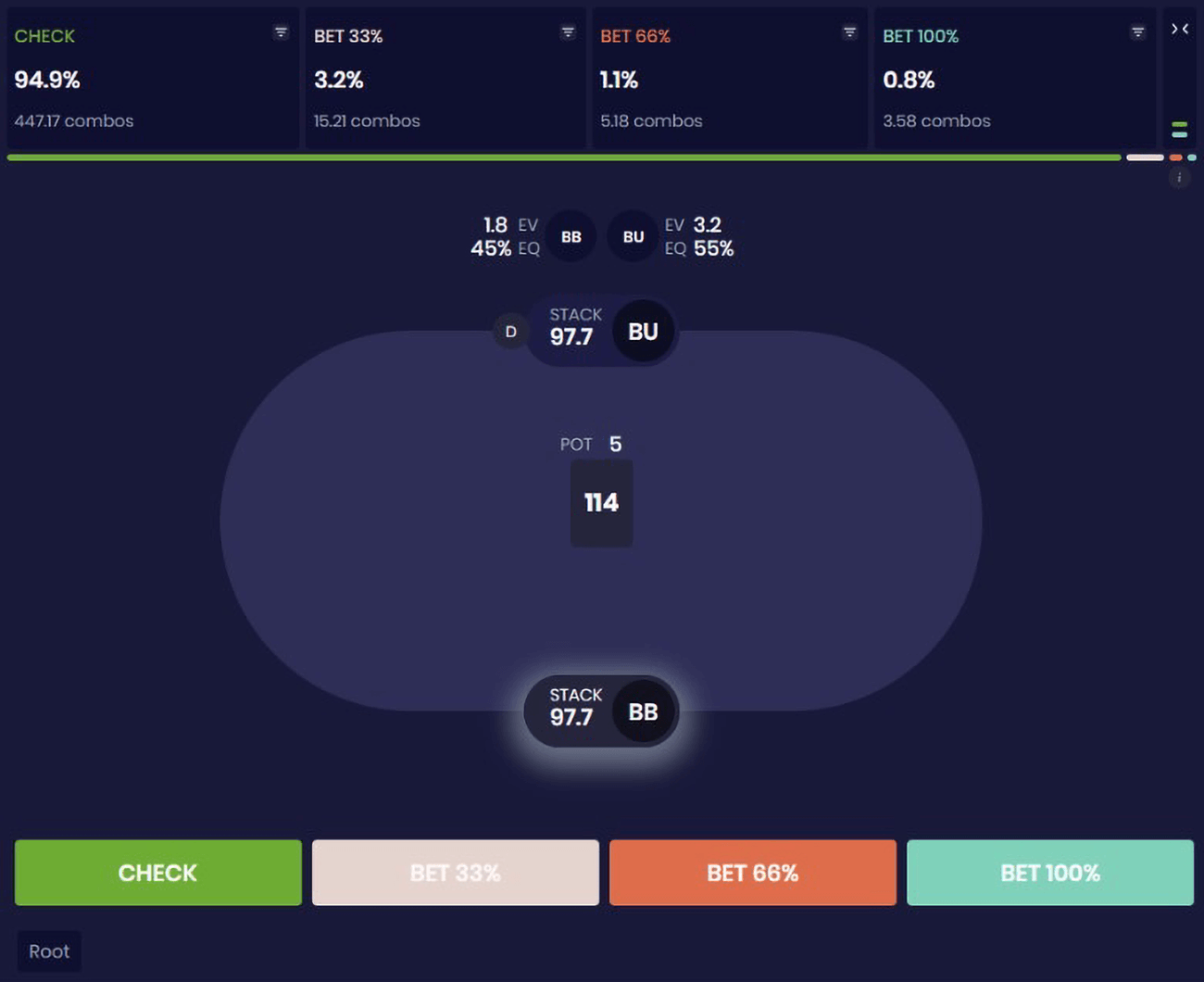In modern poker, both in tournaments and cash games, most heads-up pots follow the same pattern: one player raises a few big blinds, the Big Blind calls, almost always checks the flop, and the raiser then decides whether to continuation bet or not.
Of course, the preflop caller is not obliged to check, but the overwhelming majority of players do - and, generally speaking, they are correct. Leading the flop as the preflop caller (often called donk betting or donking) is a move primarily associated with inexperienced or recreational players. Betting out of position into the preflop aggressor may sometimes disrupt your opponent’s usual game plan, but in the long run, it will most likely hurt your win rate significantly.
Why is that the case? What is the strategic logic behind checking 100% of your range as the preflop caller, and under what circumstances - if any - can leading become a reasonable option?
These are the questions we are going to explore in this article.
The Reasoning Behind Checking to the Aggressor
Let’s look at one of the most common scenarios in No-Limit Hold’em. Everybody folds to you, you open on the Button, and the player in the Big Blind defends. For this example, assume a 100 BB deep cash game. From these positions, the ranges should look roughly like this: you open linearly with about 40% of the strongest hands, while the Big Blind defends with around 40% of the whole hand matrix. Their defending range mainly consists of medium-strength holdings, since the very best hands are moved into a ~10% 3-betting range together with some specific bluffing combos.
Now, if we check the aggregated solver report for a batch of 114 flops, the Big Blind should almost always check - except for fewer than ten boards. While exact checking frequencies change with different stack depths or under ICM pressure in tournaments, the overall pattern is clear: the out-of-position player should check the vast majority of the time, regardless of conditions.
Range advantage
The first is the range advantage of the in-position player. As we’ve already explained on our blog, the strength of a range is always relative to another range. The preflop opener’s range contains the strongest starting hands and therefore holds more equity than the defender’s range. In the ranges suggested by Deepsolver, this translates into roughly a 55-to-45% equity lead.
Most flop textures do not change this ratio dramatically. On average, across all possible boards, the in-position player still holds the stronger range. And what is one of the key reasons to bet in poker? Having adequate equity - the more equity your range has against an opponent’s range, the more often you should bet.

Positional advantage and equity realization
The second reason for a check-heavy out-of-position strategy is positional (dis)advantage. Having a position is one of the biggest edges in poker. The in-position player controls the cost of seeing the turn and river cards and decides whether the hand reaches showdown or ends with a final bet on the river.
Let’s illustrate this with a cash game example. You defend the Big Blind against a Button open (let’s assume that equals around 45% of hands). You hold A♦2♦, and the flop comes 6♠4♠2♠. Against your opponent’s range, your hand has over 50% equity.

That sounds strong - but in reality, your spot is problematic. Almost no turn card improves your hand: higher pairs appear on the board, and every additional spade makes it nearly impossible to reach showdown and win. Even worse, identifying correct bluff opportunities will be hard.
This is a common scenario with weak hands that have no reliable way to improve. You will often get bluffed out by your opponent when they miss, or lose at showdown when they connect. While your hand shows good equity on the flop, your chances of realizing that equity - actually winning the pot 50% of the time - are very slim.
Being in position puts the aggressor in the driver’s seat, making equity realization much easier and leaving little room for the out-of-position player to lead on the flop.
Some less experienced players try to solve this problem by leading their strongest hands into the preflop aggressor. However, this strategy is easy to exploit - even by opponents without deep theoretical knowledge. They will fold their weakest hands and continue only with strong holdings or hands that can improve significantly. Combined with the positional advantage, this makes playing against a poorly designed, lead-heavy strategy very straightforward.
There Are Situations in NLH When Leading Makes Sense
However, unless you are an experienced player, there is no reason to overcomplicate your strategy. You will be perfectly fine sticking to a 100% check-as-preflop-caller approach and focusing your study time on more influential aspects of the game.
That being said, for those curious about when leading actually makes sense, we won’t leave the topic unfinished - in the next article we will take a closer look at the best situations to lead.
